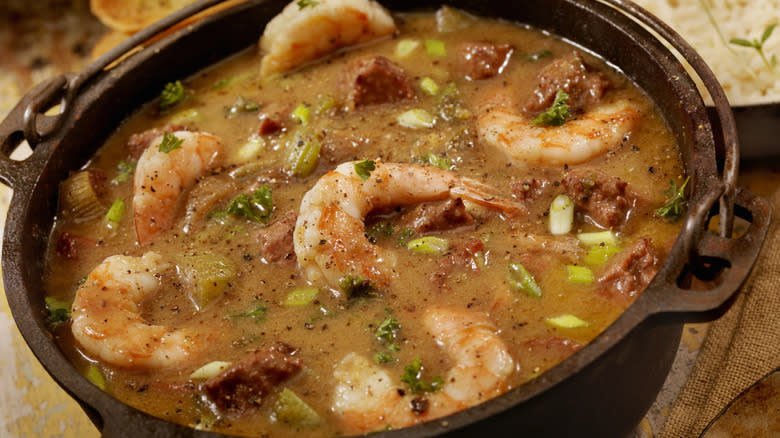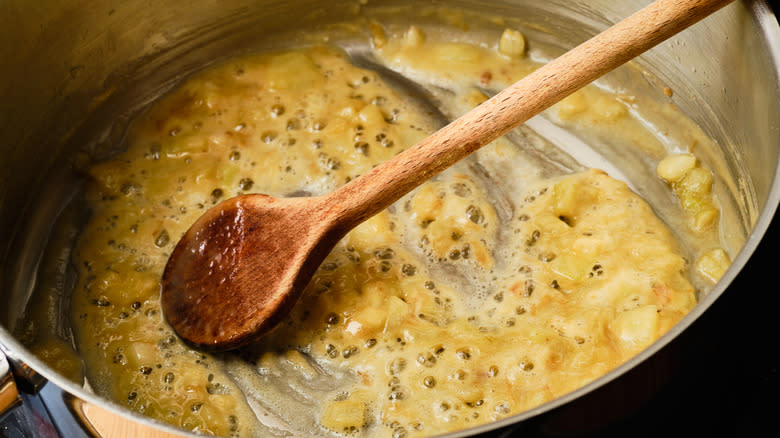Butter Vs Oil: Which Makes The Best Gumbo Roux

While roux might sound like a fancy cooking term, it's actually a simple mixture of fat and flour used to thicken sauces, gravies, and, yes, gumbo. While roux is used in classic French cuisine, it also features heavily in the French-inspired Cajun and Creole styles, so for this reason, Mashed asked for some roux-making tips from Edgar "Dook" Chase IV. Chase is the third member of his family to work as the executive chef at Dooky Chase, a New Orleans establishment that touts itself as one of the city's top spots for Creole cooking. When we asked the restaurateur whether butter or oil was best for roux, he told us, "You can use either," but revealed that oil is preferred in his kitchen.
Chase explains, "Butter ... [is] easier to burn" and advises caution when using it. If it scorches, you'll roux the day (and ruin the roux). "Oil is a little more forgiving," he adds. That makes it well-suited for use in a busy restaurant kitchen where sauciers might have to keep an eye on multiple processes at once. If you're making roux for a meaty gumbo recipe, however (even a seafood gumbo can contain sausage), Chase says you don't need to stick with plain old oil. At his restaurant, he tells us, "We sweat the meat in the oil ... and that oil is what we use for the roux."
Read more: 16 Little-Known Facts About Salt
Your Choice Of Fat Might Also Depend On The Roux

While Edgar "Dook" Chase IV says the choice of fat to use for roux "depends on the level of your cooking," there are other factors at play that might influence the decision. Basically there are four different stages of roux, each named after the different shades that correspond with how long it's been cooked. White roux has been cooked for just a few minutes, while blond roux cooks a bit longer until it turns golden brown. Brown roux is a medium-brown color approximately that of peanut butter, while dark brown roux is simmered until it looks (but doesn't taste) like a melted Hershey bar. There's also something called brick roux which contains tomato paste, thus giving it a reddish brown color.
For white and blond roux, butter may be preferred, but you can also use other saturated fats such as lard, suet, bacon grease, or chicken or duck fat. When you're making a darker roux like you would for gumbo, oil is a much better choice since it's less likely to scorch and ruin the flavor. Vegetable and canola oil work just fine, although if you want to use a fancier type of high smoke point oil like avocado, you go right ahead. Neutral-flavored oils are best, though, so save the EVOO for a different purpose. It's also possible to use a blend of butter and oil to get a taste of the former while lessening the risk of it burning.
Read the original article on Mashed.

